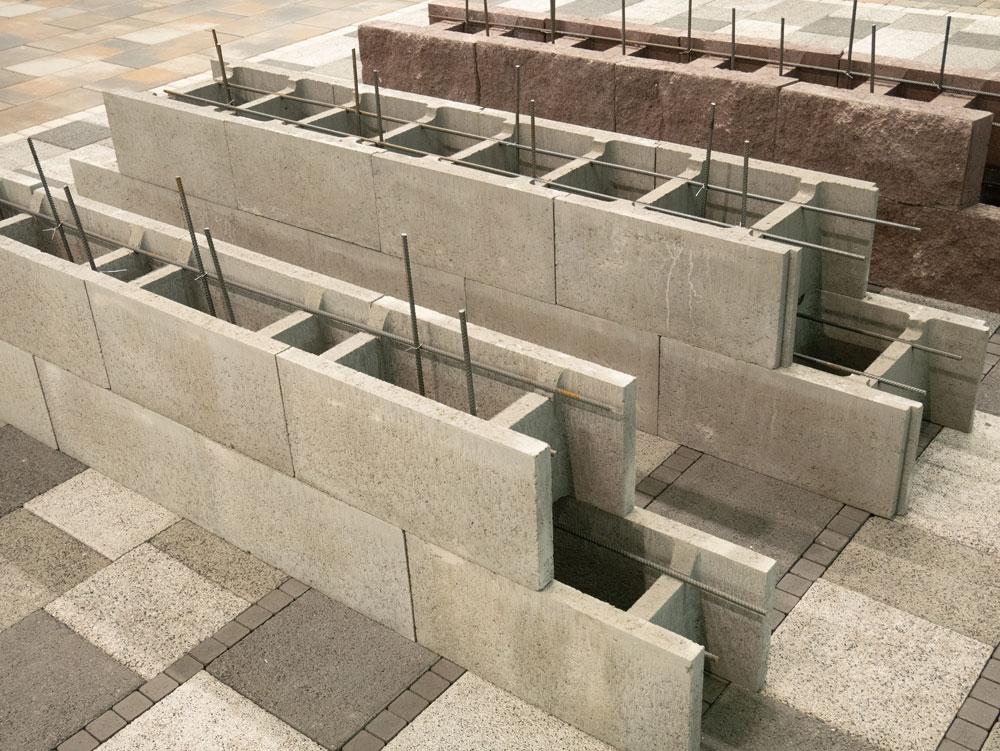In October 2023, the Department of Health and Social Care published an updated list on hospital sites in England that are confirmed to contain reinforced autoclaved aerated concrete (RAAC).
RAAC is a lightweight form of concrete which was frequently used in public sector buildings from the 1950s until the mid-1990s.
It is predominantly found as precast panels in roofs, commonly found in flat roofs, and occasionally in floors and walls.
This means that it may be found in any hospital building that was either built or modified during this time. The Standing Committee on Structural Safety (SCOSS) has noted that: “Although called ‘concrete’, RAAC is very different from traditional concrete and because of the way in which it was made, much weaker.”
In 2023, the Health and Safety Executive declared: “RAAC is now life-expired. It is liable to collapse with little or no notice.”
In many cases, RAAC panels can easily be identified if a building’s structure is not covered by finishes or decoration, such as ceilings. RAAC panels are most commonly found on flat roofs, but they may also be found in pitched roofs, floors or walls.
RAAC panels are light grey or white in appearance and the underside of the panels will appear smooth. The inside of the planks will appear bubbly, often described as looking like an Aero bar. Unlike traditional concrete, there will not be visible stones in the panels.
If you have drawings from the time the building was built or modified, you should review these. Common manufacturers of RAAC panels are Siporex, Durox, Celcon, Hebel and Ytong.
RAAC panels typically have a chamfer along their edge meaning there is a distinctive V-shaped groove every 600mm in the surface of the roof, floor or wall.
RAAC panels are very soft – if you press a screwdriver, screw or nail into the surface of a RAAC panel you will be able to make an indentation. If there is a surface covering to the panels, you should not try to make an indentation as the covering may contain asbestos.
RAAC panels may bow or deflect. From the underside of the roof or floor you may see a ‘gap’ between two adjacent panels.
If you are unsure, assistance should now be sought from an appropriately qualified building surveyor or structural engineer with experience of RAAC to confirm if RAAC is present in any of the buildings in your estate.
The current situation
According to the information published in October, there are 42 hospital sites with confirmed RAAC in the rolling national programme. Eighteen sites have been identified since May 2023, following updated monitoring guidance from the Institution of Structural Engineers (IStructE).
All the sites that are confirmed to have RAAC are in NHS England’s ongoing national RAAC programme, which is supported with additional funding of £698 million from 2021 to 2025 for trusts to put in place necessary remediation and failsafe measures.
Sites can join the programmes regardless of the extent to which RAAC is present on the estate or whether it’s in clinical or non-clinical space.
Three sites have already entirely eradicated previously confirmed instances of RAAC and have therefore left the programme.
This includes Bassetlaw District General Hospital at Doncaster and Bassetlaw Teaching Hospitals NHS Foundation Trust; Oval Depot at London Ambulance Service NHS Trust; and Kidderminster Hospital Treatment Centre at Worcestershire Acute Hospitals NHS Trust.
The seven most affected hospitals are also part of the New Hospital Programme for full replacement by 2030. These seven include Airedale, Queen Elizabeth King’s Lynn, Hinchingbrooke, Mid Cheshire Leighton, Frimley Park, West Suffolk Hospital, James Paget Hospital. According to the Department of Health and Social Care (DHSC), where possible, RAAC is identified, visual inspections and structural surveys take place to verify its presence and level of risk. Then if the presence of RAAC is confirmed, trusts join the national RAAC programme.
The programme aims to support mitigation, remediation and wider planning to maintain safety.
A Department of Health and Social Care spokesperson said: “The NHS has an established national programme to manage hospital buildings with confirmed reinforced autoclaved aerated concrete (RAAC), backed with significant additional funding of £698 million from 2021 to 2025, for trusts to put in place necessary remediation and failsafe measures.
We remain committed to eradicating RAAC from the NHS estate entirely by 2035 and our approach is in line with guidance from the Institution of Structural Engineers. “Additionally, we have announced that the seven most affected NHS hospitals will be replaced by 2030 through our New Hospital Programme.
“Where structural surveys identify RAAC in their estate, trusts are inducted into this national remediation programme. Each site will be different – and just because RAAC is present, it does not necessarily mean there is a high risk.”
Queen Elizabeth Hospital
Many hospitals are using emergency supports and monitoring systems. Queen Elizabeth Hospital in King’s Lynn was built in 1980 and 79 per cent of its hospital buildings have RAAC. Based on a national expert view, the hospital has an end-of-life date of 2030. In a modernising the hospital document published last year, it was stated: “There is no ‘plan B’ for QEH – after 2030 we may not be able to continue providing all core services to local people. The very worst-case scenario is that parts of the hospital may have to close if a long-term solution is not confirmed.
The situation at QEH has resulted in temporary closures of services, with the critical care unit closing for two weeks in 2021 and three theatres closing for four days in July 2022. At the time, props and failsafes were installed across 56 areas of the hospital – however, this only addressed 8 per cent of the RAAC issues.
In September last year, hospital staff wrote to patients about the situation: “We would like to reassure all patients and their families that we have a robust rolling installation programme of steel and timber support props and ‘failsafes’ to maximise safety for our patients, visitors, and staff,” a spokesperson said.
“We have a team of skilled engineers carrying out daily structural checks across the hospital. We appreciate it can be disconcerting for our patients and visitors when they see and hear building work taking place during their visit.
“Teams across the Trust are doing their upmost to keep disruption to a minimum while still delivering the highest possible levels of care.”





